Lanham Act – Important Sections
advertisement
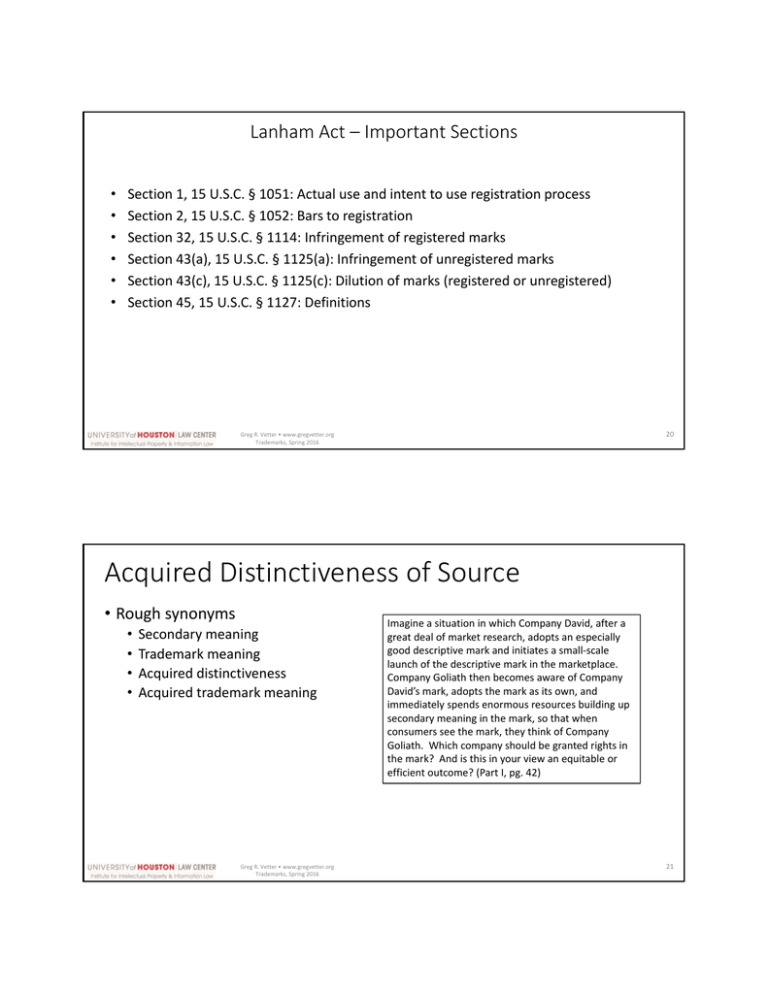
Lanham Act – Important Sections • • • • • • Section 1, 15 U.S.C. § 1051: Actual use and intent to use registration process Section 2, 15 U.S.C. § 1052: Bars to registration Section 32, 15 U.S.C. § 1114: Infringement of registered marks Section 43(a), 15 U.S.C. § 1125(a): Infringement of unregistered marks Section 43(c), 15 U.S.C. § 1125(c): Dilution of marks (registered or unregistered) Section 45, 15 U.S.C. § 1127: Definitions 20 Greg R. Vetter • www.gregvetter.org Trademarks, Spring 2016 Acquired Distinctiveness of Source • Rough synonyms • • • • Secondary meaning Trademark meaning Acquired distinctiveness Acquired trademark meaning Greg R. Vetter • www.gregvetter.org Trademarks, Spring 2016 Imagine a situation in which Company David, after a great deal of market research, adopts an especially good descriptive mark and initiates a small‐scale launch of the descriptive mark in the marketplace. Company Goliath then becomes aware of Company David’s mark, adopts the mark as its own, and immediately spends enormous resources building up secondary meaning in the mark, so that when consumers see the mark, they think of Company Goliath. Which company should be granted rights in the mark? And is this in your view an equitable or efficient outcome? (Part I, pg. 42) 21 Zatarain’s, Inc. v. Oak Grove Smokehouse, Inc. (5th Cir. 1983) • Approaches to determining whether a mark is descriptive (rather than suggestive/arbitrary): • Dictionary definition • Imagination test • Competitive need • Third‐party uses • See also TMEP 1209.03 Greg R. Vetter • www.gregvetter.org Trademarks, Spring 2016 22 Frosty Treats Inc. v. Sony Computer Entertainment America (8th Cir. 2005) • Alleged infringement is use in a video game • Sony wins by summary judgment that Frosty Treat’s mark is generic or descriptive lacking secondary meaning • Secondary meaning analysis for FROSTY TREAT Greg R. Vetter • www.gregvetter.org Trademarks, Spring 2016 23 Cartier, Inc. v. Four Star Jewelry Creations, Inc. (S.D.N.Y. 2004) • Discussion of survey evidence as to whether the designs had acquired distinctiveness Greg R. Vetter • www.gregvetter.org Trademarks, Spring 2016 24 Summary of Distinctiveness Doctrine So Far • Distinctiveness and the Abercrombie spectrum • A mark is “distinctive” (of source) if it possesses either “inherent distinctiveness” or “acquired distinctiveness” • Inherently distinctive marks consist of suggestive, arbitrary, and fanciful marks. • Non‐inherently distinctive marks consist of generic and descriptive marks. Descriptive marks may receive protection if they possess “acquired distinctiveness” (i.e., “secondary meaning”). • The mark’s “primary significance” is its “secondary meaning” as a designation of source • The most important borderlines in the Abercrombie spectrum are (1) between generic and descriptive marks, (2) between descriptive marks with secondary meaning and without secondary meaning, and (3) between descriptive marks and suggestive marks • Note that the distinctiveness analysis of verbal marks is different in several aspects from the distinctiveness analysis of non‐verbal marks • Genericness Greg R. Vetter • www.gregvetter.org Trademarks, Spring 2016 25 Genericness . . . Greg R. Vetter • www.gregvetter.org Trademarks, Spring 2016 26 Genericness . . . Greg R. Vetter • www.gregvetter.org Trademarks, Spring 2016 27 Frito‐Lay North America, Inc. v. Princeton Vanguard, LLC (TTAB 2014) • Category of goods: “pretzel crackers” • Proposed mark is a compound term • Is a “crisp” a “cracker”? • Factors and evidence under the factors Greg R. Vetter • www.gregvetter.org Trademarks, Spring 2016 28 Frito‐Lay North America, Inc. v. Princeton Vanguard, LLC, (Fed. Cir. May 15, 2015) • Compound term proposed as mark versus understanding the term in its entirety • TTAB differentiation of compound term versus phrase Specifically, as explained below, there is no evidence that the Board conducted the necessary step of comparing its findings with respect to the individual words to the record evidence demonstrating the public’s understanding of the combined term: PRETZEL CRISPS. By failing to do so, the Board took the type of short‐cut analysis we have said is prohibited and ignored evidence that might compel a contrary conclusion (Part I, pg. 78) Greg R. Vetter • www.gregvetter.org Trademarks, Spring 2016 29 Thermos Survey • American Thermos Products Co. v. Aladdin Industries, Inc., 207 F. Supp. 9 (D. Conn. 1962) • Are you familiar with the type of container that is used to keep liquids, like soup, coffee, tea and lemonade, hot or cold for a period of time? • If you were going to buy one of these containers tomorrow— that is, the type that keeps food and beverages hot or cold—what type of store would you select to make your purchase? • What would you ask for—that is, what would you tell the clerk you wanted? • 75% of approx. 3,000 persons interviewed said “Thermos,” 11% said “Vacuum Bottle” and, as a result of follow‐up questions, 12% said they thought that “Thermos” had some trademark significance. • Can you think of any other words that you would use to ask for a container that keeps liquids hot or cold? Greg R. Vetter • www.gregvetter.org Trademarks, Spring 2016 30 Teflon Survey • E. I. Du Pont de Nemours & Co. v. Yoshida International, Inc., 393 F. Supp. 502, 185 U.S.P.Q. 597 (E.D.N.Y. 1975) • I'd like to read 8 names to you and get you to tell me whether you think it is a brand name or a common name; by brand name, I mean a word like Chevrolet which is made by one company; by common name, I mean a word like automobile which is made by a number of different companies. So if I were to ask you, “Is Chevrolet a brand name or a common name?,” what would you say? • Now, if I were to ask you, “Is washing machine a brand name or a common name?,” what would you say? • [If respondent understands continue. If not understand, explain again.] Greg R. Vetter • www.gregvetter.org Trademarks, Spring 2016 31 Teflon Survey Greg R. Vetter • www.gregvetter.org Trademarks, Spring 2016 32 Lindows . . . Greg R. Vetter • www.gregvetter.org Trademarks, Spring 2016 33
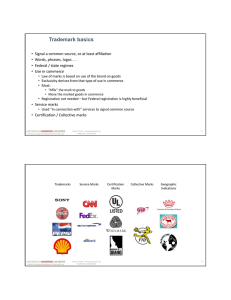
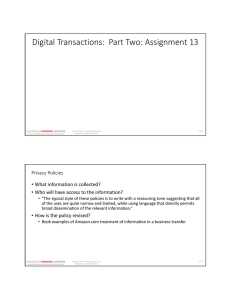
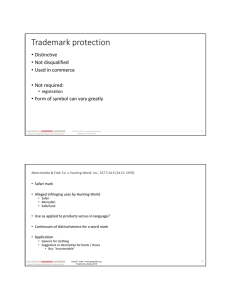
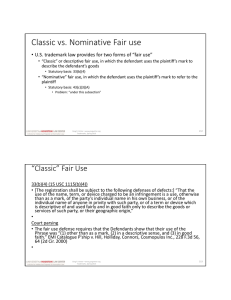
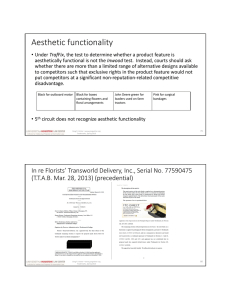
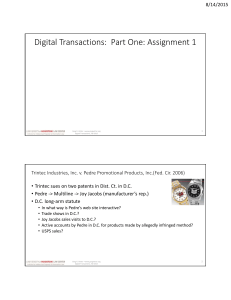
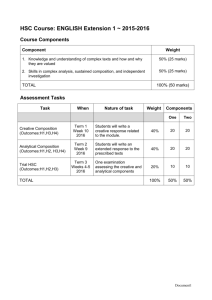
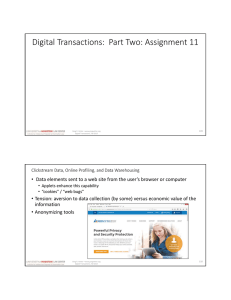

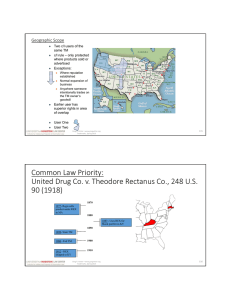
![Bars to protection . . . Functionality . . . In re Morton Norwich Products, Inc., 671 F.2d 1332 (CCPA 1982) [_NOT ASSIGNED_]](http://s2.studylib.net/store/data/010889576_1-440da8ac3163896658a523763bb188ab-300x300.png)